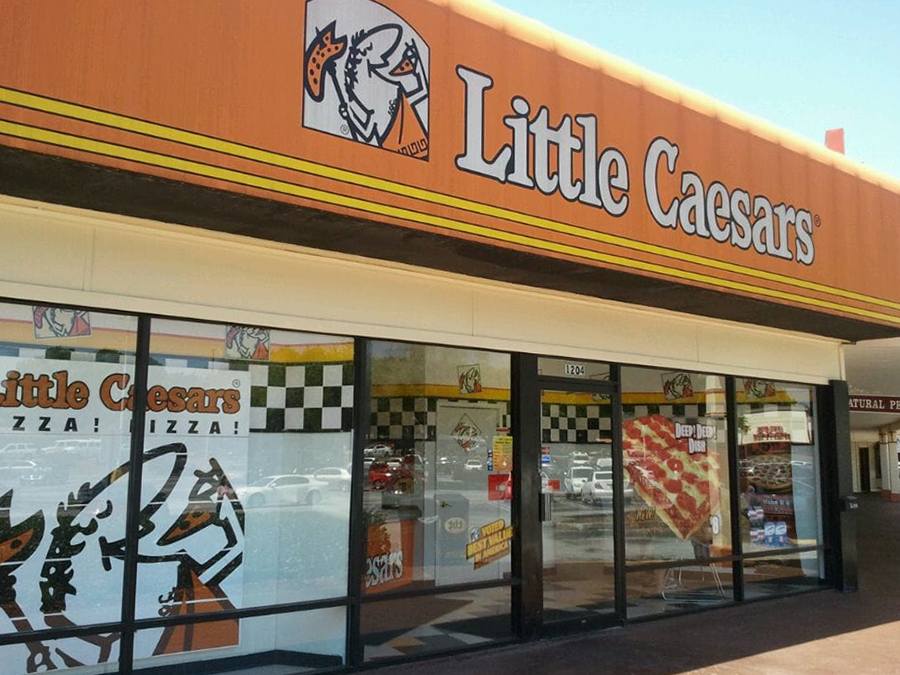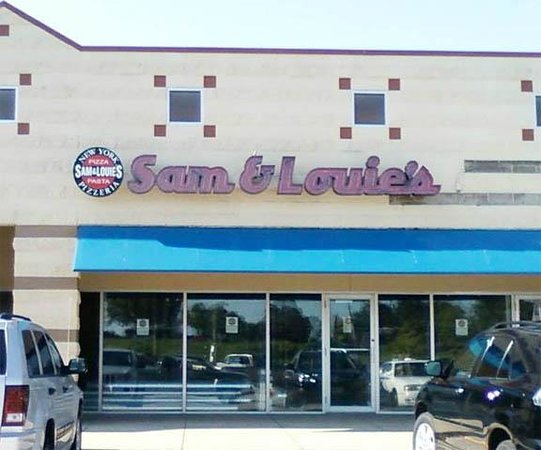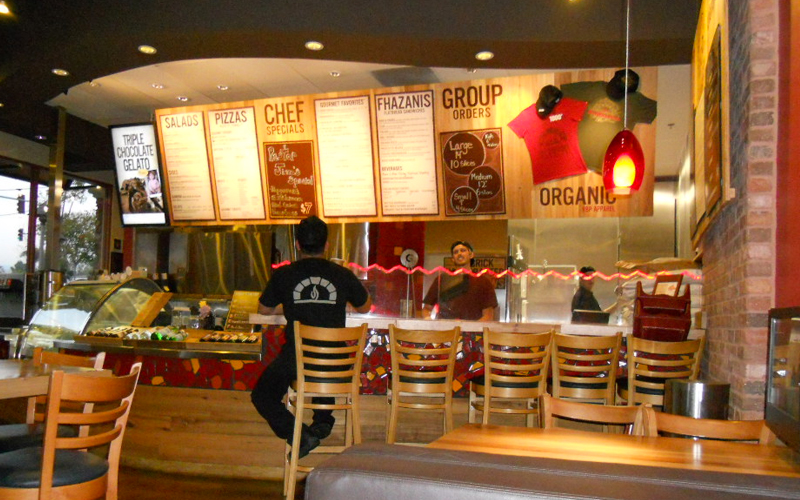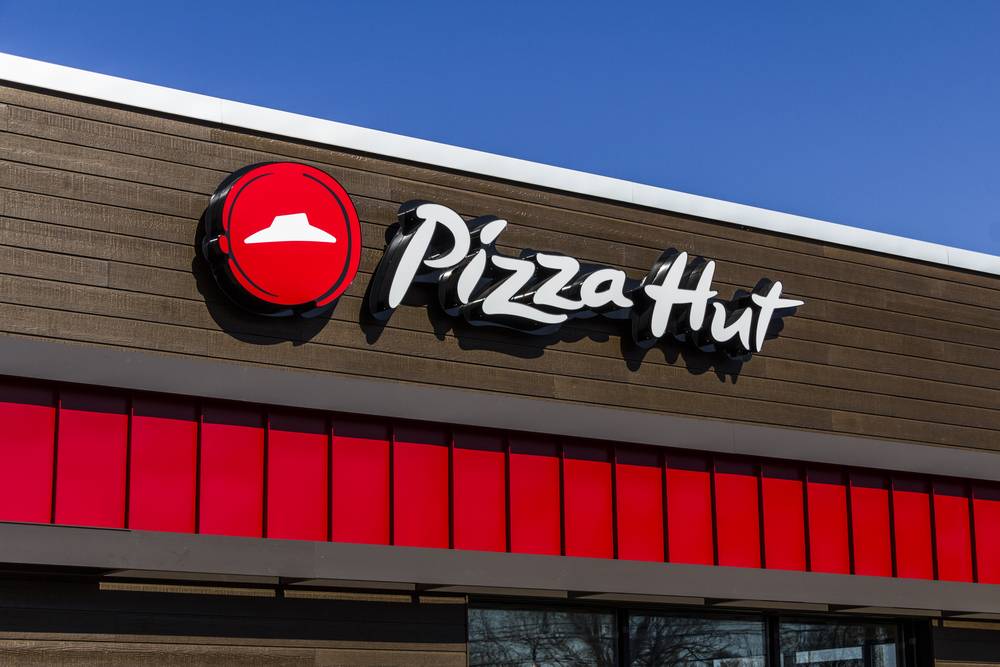Top 5 Best Pizza Franchises in USA for 2022
One of the most popular foods consumed worldwide is pizza. As a result, the pizza industry has consistently ranked among the most lucrative in the food industry. Numerous well-known pizza brands are using franchising to grow their businesses. So, if you're seeking for a business that will be profitable and give you a quick return on your investment, look no further. Here is the list of the top 5 pizza franchises in the USA
Top 5 Pizza Franchises in USA
Domino’s Pizza
Established in 1960, Domino's is a Global Brand and the acknowledged global leader in pizza delivery. It operates a network of company-owned and franchise-owned stores in the United States and other markets.
Tom Monaghan and his brother James bought "DomiNick's," a pizza shop in Ypsilanti, Michigan, in 1960, and it is where Domino's got its start. Monaghan borrowed $500 to purchase the shop, and in 1961 James exchanged his share of the company for a Volkswagen Beetle. To sustain himself while he pursued his studies to become an architect, Tom Monaghan started the pizza business. But soon after, he stopped attending classes to focus on growing the company.
When Tom Monaghan became the sole owner of the business in 1965, he changed the company's name to Domino's Pizza, Inc. As Domino's expanded, its success was credited to Monaghan, who had grown up in Catholic orphanages and foster homes, and his theory that customers ordered pizza because they were hungry. Pizza delivery alone won't satisfy customers; a business must also guarantee quick delivery. Later, Domino's promised to deliver pizza in 30 minutes or less.
In the middle to late 1970s, the 30-minute delivery philosophy started to take off. In Ypsilanti, Michigan, the first Domino's Pizza franchise location opened its doors in 1967. The idea of franchising significantly accelerated the company's expansion. The 200th Domino's location opened in 1978, and in Winnipeg, Canada, the chain's first international location debuted in 1983. The 1,000th Domino's store opened that same year. For a total of 2,841 locations, Domino's opened 954 additional locations in 1985. Monaghan left his position as Domino's president in 1989 for a two-year period in order to focus on charitable endeavours.
Dominio's Franchise Cost
Domino's Pizza charges a $25,000 franchise fee, however the total initial investment might be anywhere between $119,950 and $461,700. The 10-year franchise contract is renewable, and the royalty rate is 5.5 percent. Franchisees should have access to at least $75,000 in liquid funds.
Domino’s franchise profit margin
With net sales of $1.15 billion, up 6.3 percent in 2019, Domino's outperformed expectations for its financial performance. They also saw a 3.4 percent increase in same-store sales, indicating that many of their franchise locations are performing well. The number of Domino's locations is increasing as well; just in the fourth quarter of 2019, 141 net new locations were added. Their takeout sales also increased by roughly 4% in 2019.
Training required for Domino's franchise
Franchisees of Domino's are required to complete a five-day franchise development programme and a four-day pizza prep school at Domino's corporate headquarters. Franchisees will also go through six to eight weeks of in-store training.
Active outlets
There are around 18, 848 active outlets of Domino's Pizza all round the world.
Pizza Hut Franchise
In their hometown of Wichita, Kansas, brothers Dan and Frank Carney established Pizza Hut in 1958. Dick Hassur established the first franchise location in Topeka, Kansas, a year after Pizza Hut was officially founded in Kansas.
The strong marketing of the concept of the pizza restaurant helped Pizza Hut expand in the early 1960s. When there were 145 Pizza Hut franchise locations, in 1966, a home office was set up in Wichita to manage the operations.
The first Pizza Hut franchise in Canada opened two years later. The International Pizza Hut Franchise Holders Association (IPHFHA) was founded after that. It sought to acquire 120 restaurants, or 40% of the business' franchise operations, and add them to the six locations that Pizza Hut already held outright.
In 1970, Pizza Hut launched franchises in Sydney, Australia, and Munich, Germany. In Nashville, Tennessee, the chain's 500th eatery debuted the same year. With slightly over 1,000 locations at the time, Pizza Hut surpassed Domino's as the largest pizza chain in the world in 1971 in terms of sales and store count.
Pizza Hut continued to grow in 1973 by launching franchises in Japan and the United Kingdom. Three years later, the chain had 2000 franchised locations and more than 100 restaurants outside of the United States. In Independence, Missouri, the chain's 2,000th eatery was inaugurated. At this time, Pizza Hut began to place a greater emphasis on advertising, which raised the chain's public profile. In the US market, campaigns were launched at both the local and national levels.
Franchise Cost
Pizza Hut charges a $25,000 franchise fee for a 20-year contract, even though the initial investment ranges from $297,000 to $2,109,000. Franchisees are also required to contribute an additional 3 percent into national marketing initiatives in addition to the company's continuous 6 percent royalty charge on all sales. Interested parties must have a net worth of at least $700,000, with at least half of that amount in liquid assets, in order to purchase a franchise.
Training Overview
The franchisor offers the initial training course at both one of its system restaurants and its corporate offices in Plano, Texas. All competent operators of the franchisee are required to successfully complete the initial training programme.
Depending on the experience of the franchisees and/or the experience of their trained operators, the franchisor may decide to make the First Slice section of the first training programme from 8 to 12 weeks. Three to four weeks before the system restaurant's launch, the First Slice section of the initial training session should be planned to end. In accordance with any criteria the franchisor may set in the brand standards or in another way, franchisees are always free to ask for on-site training or support. Franchisees who meet the requirements and the system restaurant manager(s) must attend and successfully complete any extra training programmes that the franchisor may occasionally develop. Furthermore, the franchisor may occasionally host conferences, conventions, or training programmes.
Territory Required
Each of the system restaurants will have a protected radius of 500 yards around it, according to the franchisor (protected radius). The franchisor will also give franchisees a designated delivery area for each system restaurant they run, within which they are permitted to transport the authorised goods.
Active outlets
There are around 18,385 active outlets of Pizza Hut.
Little Caesars Franchise
Just behind Pizza Hut and Domino's, Little Caesars is one of the biggest pizza chains in the United States. The company's hallmark competitive advantages are its $5 big pizza selections and HOT-AND-READY, which enables walk-in customers to get fresh, pre-made meals with little to no wait time. There are also products manufactured to order that can be customised.
Little Caesars competes in a saturated market by unabashedly touting price and instant gratification. Franchisees can choose from a number of non-standard models or launch a standard Little Caesars restaurant.
In 1959, in Garden City, Michigan, Mike Ilitch and his wife Marian established the first Little Caesars. The first franchise, which was first known as Little Caesars Pizza Treat, was sold in 1962, and it immediately started to grow from there. Little Caesars started expanding internationally in 1969, first into Canada, and by 1987, it had stores in each of the USA's 50 states.

In 2005, the pizza restaurant started selling its $5 big "Hot- N-Ready" pizza as a menu item. Due to the overwhelming success of this new function, it was decided to make it a permanent part of the menu. For nearly ten years, Little Caesars has continued to be the pizza brand with the fastest growth.
Their plan to launch numerous franchise locations changed the course of their luck. Faster than anyone could have anticipated, the brand became well-known. It ended up becoming one of the pizza franchises with the fastest rate of growth, both domestically and gradually abroad.
Franchise Cost
- Franchise fee - $20,000
- Total investment- $350,000-$1,427,500
In addition to the price of each franchise unit to be built, reserving a territory for the potential construction of Little Caesars restaurants demands a total expenditure of $21,000 to $25,000. Franchisees are required to pay a recurring royalty that is equal to the greater of 6% of weekly gross sales or $100, payable each week. Franchisees are required to contribute up to 7% of gross sales to the franchisor's advertising fund for national advertising.
Little Caesars Franchise Profit
Little Caesars franchise does not provide financial information on franchises, but based on current projections, it is believed that the firm generates about $4 billion in revenue annually. The corporation sold goods worth 3.81 billion USD in the United States in 2019. It follows that a Little Caesars franchise should undoubtedly make a nice living. A Little Caesars franchisee may expect to make about 37796 USD each year.
Training & Support
For new franchisees, Little Caesars provides one week of training at its corporate office in addition to 1-2 weeks of on-site training.
The specialised franchise development team of Little Caesars assists qualified franchisees in putting the procedures and systems in place that have made so many other franchisees successful. Franchisees are given the resources they need to implement the well-tested system of the brand, such as ongoing training, architectural services to assist with design and construction, preferred lenders, sustained research and development of new products, and ongoing, successful marketing promotions.
Little Caesars' strong partnership with its sister firm, Blue Line Foodservice Distribution, benefits franchisees as well because it enables the company to take advantage of its purchasing power and lessen the effects of rising expenses on its customers.
Obligations and Restrictions
The franchisor stipulates that the franchisee or a person it has approved must give the restaurant's administration and operations their complete attention and best efforts. If a franchisee receives permission to operate more than one restaurant, they are still required to personally oversee every one of those businesses. The franchisor must approve the on-site operator(s), and it may require that they have a minimum equity interest in the entity that operates and/or owns the restaurants they supervise if the restaurants are situated in different market areas or if franchisees choose not to live in the same region as their restaurants. Franchisees are required to operate the restaurant strictly in accordance with the procedures, standards, and requirements that the franchisor specifies in the Operational Resource Guide or in another written document in order to maintain the greatest level of quality and service.
Active Outlets
There are 5463 outlets of Little Caesars all round the world.
Sam and Louie's
A casual Italian eatery and New York-style pizzeria, Sam & Louie's is committed to provide a dining experience focused on custom, excellent service, family, and fun. With over 35 fresh and delectable toppings to select from, each Sam & Louie's pizza is produced with a thin crust that is hand-tossed and stretched to create the familiar size, shape, and taste that New York pizzas are famous for.
In Omaha, Nebraska, the family opened their first small, family-run pizza in 1994. The business started franchising in 2000. Each eatery offers pizza, calzones, pasta, hoagies, and salads made in the style of New York.
Franchise Cost
- Initial Franchise fee of $25,000
- Initial Franchise term is 10 years with the option for 2 renewals of 5 years each
- Weekly Royalty is 5%
- Marketing Development is 3%

Depending on the size and condition of the space, the total cost to open for business will range from $331,500 to $474,700. If you intend to buy or construct a new building, more. Included in this are the franchise fee, leasehold renovations, tools, initial supplies and inventory, marketing expenses, money needed for working capital, and the training course.
Remember that prices can vary depending on the region, size, suppliers, and other elements. A typical Sam and Louie's unit has a floor area of between 2,000 and 3,500 square feet. No elaborate or expensive interior décor is necessary.
Support
Sam & Louie's is with you every step of the way to assist assure the success and expansion of your business, starting with the site selection process and continuing through the acquisition of equipment and supplies, pre- and post-grand opening, through daily operations. You will receive a private, comprehensive Operations Manual that covers every aspect of the Sam & Louie's system and is updated on a regular basis. Their friendly management team will stay in constant contact with you and be accessible for advice and assistance on any aspect of your business.
Training
Their outstanding training programme includes both classroom and practical instruction in important topics like advertising, food preparation, customer service, office work, problem solving, and more.
How much does the owner of Sam and Louie's make?
Profits from a Sam & Louie's New York Pizzeria franchise rely on a number of variables, as with any business. Profits often follow the size of the investment. Your bottom line is greatly influenced by the demand for your products, labour expenses, commercial lease rates, and a number of other factors.
RedBrick Pizza Franchise
An innovator in the field, RedBrick Pizza Kitchen Café offers freshly produced, fire-roasted gourmet pizzas, Italian flatbread sandwiches called Fhazani, tossed salads, and Italian gelato created with only the best ingredients. RedBrick Pizza Franchise creates high-quality, made-to-order menu items by fusing century-old Italian heritage with cutting-edge culinary techniques.

Fire is roasted in a 1000° bespoke brick oven to make RedBrick Pizza. RedBrick Pizza provides healthier menu alternatives that anybody can enjoy using only quality cheeses, meats, gourmet toppings, and hand-crafted dough baked with olive oil.
People may get what they want from RedBrick Pizza: an affordable, delectable gourmet pizza that is presented in a chic, fast-casual café setting. RedBrick Pizza is a better option because it has less fat, calories, and carbohydrates than regular pizza.
And for dessert, RedBrick provides a variety of premium, genuine gelatos.
Beer and wine are offered as great accompaniments to the meal in RedBrick restaurants where a liquor licence has been secured (which RedBrick advises franchisees to do).
Franchise Cost
Restaurants for RedBrick Pizza are intended to be 2,500 square feet in size, plus a patio and parking space. A build-out can cost between $316,000 and $538,000, including the cost of the building itself, the machinery, the permits, the design fees, the franchise fees, the initial marketing costs, the initial inventory, the signs, other costs, and the first three months of operating capital.
Training and Support
They set up assistance with store design, real estate site selection, and construction management from the very beginning. They provide two weeks of extensive training leading up to the opening to teach you everything from retail operations to business management.
Following the opening of your store, they continue to support you with a comprehensive marketing campaign, purchasing power derived from their connections to significant US vendors, and continual product development to keep your menu varied. They also provide quality assurance visits and continuing operations support to help keep any significant issues from arising during regular business operations at your pizza franchise.
Conclusion : Which pizza franchise from above is best ?
As a franchise seeker in this particular industry, the best pizza franchise would be Domino's Pizza Franchise as The economic model of Domino is solid cash-on-cash returns. Online ordering, direct email marketing, cost monitoring, and retail administration are all made possible by its technology platform. The supply chain of the business is set up to guarantee quality, take advantage of purchasing power, and reward franchise owners through a profit-sharing programme. All new franchise owners receive in-person and classroom training from Domino's.
